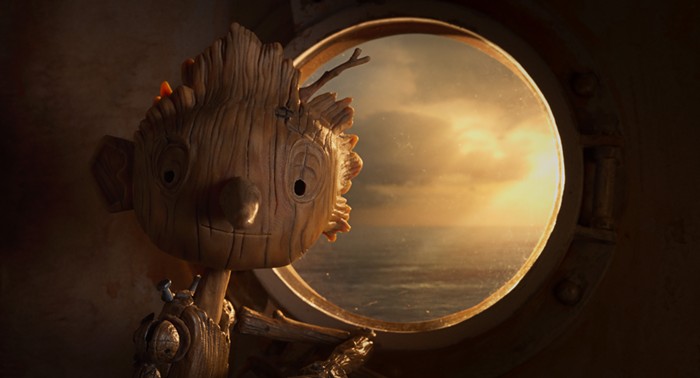WRITING/DIRECTING TEAM Marjane Satrapi and Vincent Paronnaud may have deviated from the animated format of their previous success, Persepolis, to film Chicken with Plums largely in traditional live-action cinematography, but its delivery is just as fanciful. Saturated tones and dramatic, isolating sets and lighting—with just a flourish here and there of animation—make the film something that bends and twists at the will of the story from magical realism to theatrical parody, satire, and fantasy.
It's fortunate that the vessel in which Chicken with Plums finds its way to the screen is so deft at navigating these shifts in technique, because on its own, the tale is quaint and thin. It begins in 1950s Tehran with an introduction to Nasser Ali Khan (Mathieu Amalric), a world-famous violinist plagued by melancholy and an unhappy marriage. During a fight with Faringuisse (Maria de Medeiros), his wife—she does all the work and makes all the money, he's a genius do-nothing—she breaks Nasser's violin, leaving him to decide he has nothing to live for. So—eschewing conventional methods as too painful or undignified—he simply gets into bed and waits for death to come.
During this self-imposed demise, the story skips between excursions from the past to visions of the future, spinning a pleasant, folksy tale of lost love and cruel fate, aided by elegantly macabre performances by Isabella Rossellini as Nasser's perpetually smoking mother and Chiara Mastroianni as the doomed vision of his adult daughter. Despite its weaving and seamlessly ranging embellishments, Chicken with Plums' story never gains much traction, its characters merely a shambling collection of moldering failures and disappointments, both past and still to come. The mood is akin to a grandmother telling a rambling cautionary tale by the fire: Its lessons may be wise and useful in certain regards, but it's also there to drift you into sleep.



















